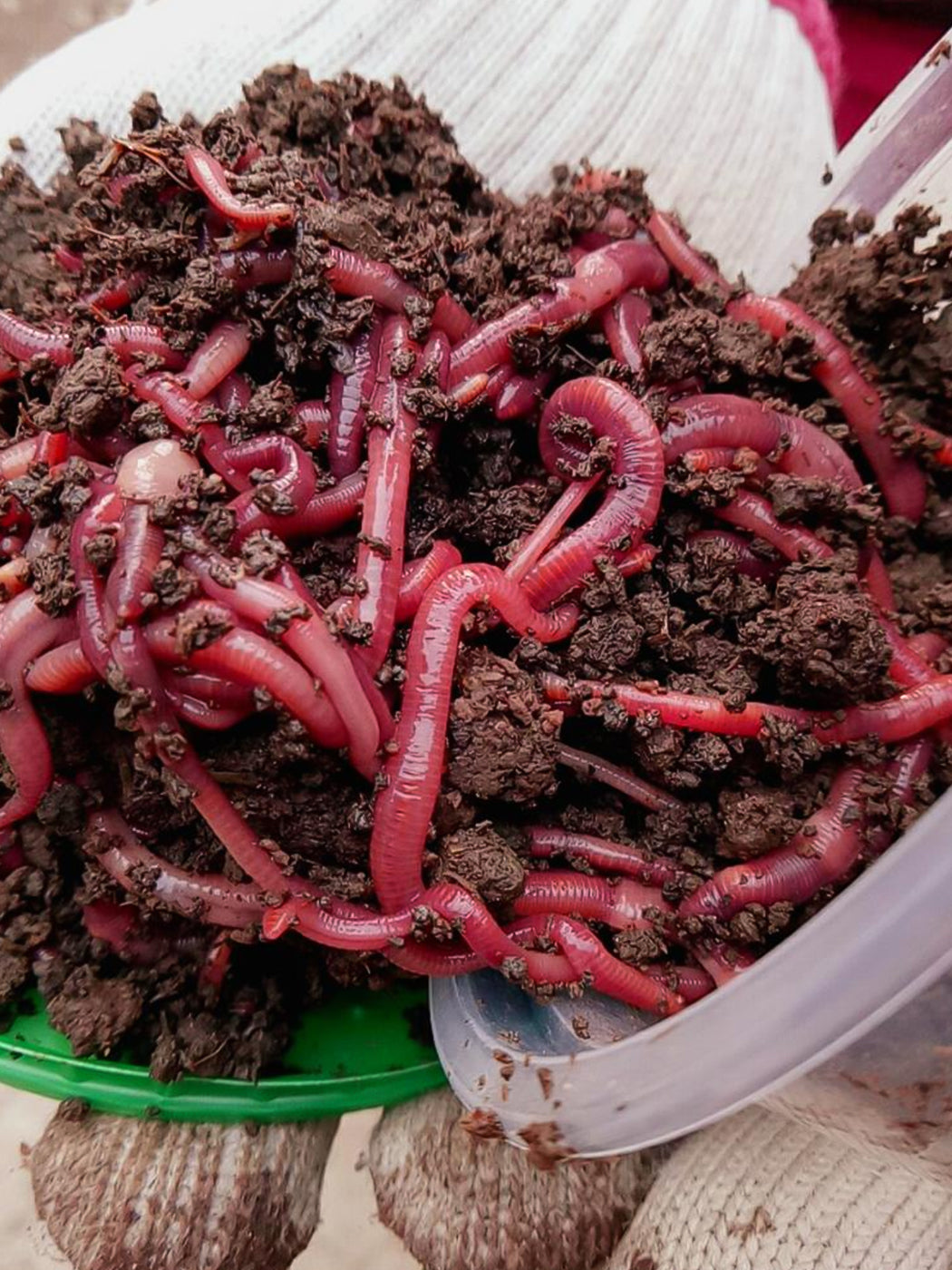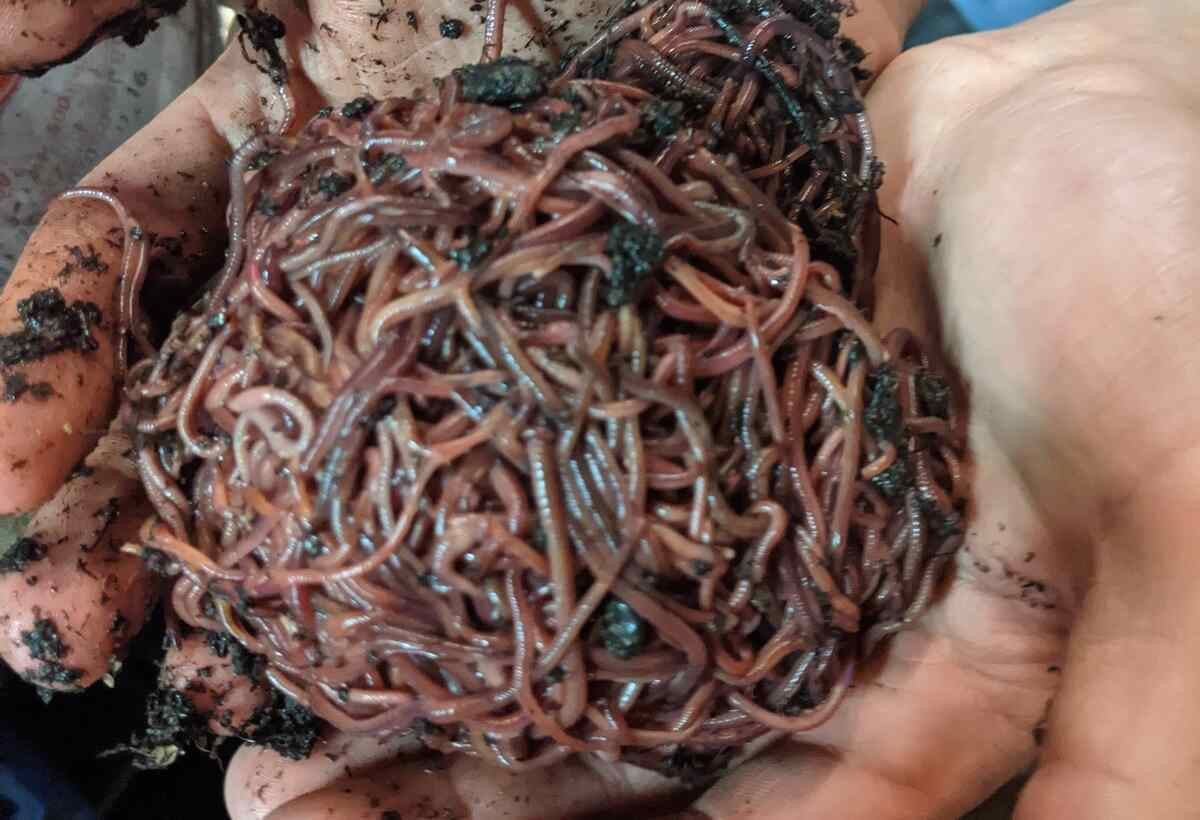Red Wigglers 101: Whatever You Required to Know for Thriving Gardens
Red wigglers, or Eisenia fetida, play an essential function in sustainable horticulture techniques, offering as reliable decomposers that transform organic waste into valuable vermicompost. Understanding their habitat, nutritional preferences, and the myriad benefits they provide can transform your gardening technique (Red Wiggler Express). As these worms prosper in certain problems, their treatment and administration are crucial for optimizing their payments to soil wellness. The question continues to be: what actions can you take to harness the full capacity of these amazing organisms in your very own yard?
Comprehending Red Wigglers

Red wigglers prosper in environments abundant in organic product and moisture. Red Wiggler Express. They possess an one-of-a-kind digestive system that allows them to refine food scraps swiftly, excreting castings that are packed with essential nutrients such as nitrogen, phosphorus, and potassium. These spreadings enhance dirt structure, improve water retention, and foster valuable microbial task, all of which add to durable plant health
Moreover, red wigglers can endure in varied problems, making them adaptable to various gardening methods, consisting of interior and exterior composting systems. Their capacity to eat big quantities of organic waste everyday placements them as useful allies for both home garden enthusiasts and business farmers. By including red wigglers right into horticulture initiatives, one can considerably improve soil fertility and support lasting horticulture methods.
Suitable Habitat for Red Wigglers
Creating an ideal environment for red wigglers is important for maximizing their composting capabilities and overall health. Red wigglers thrive in damp, dark, and well-aerated habitats, which closely resemble their natural surroundings in leaf litter and decaying organic issue. An appropriate environment needs to provide a temperature array in between 55 ° F and 77 ° F(13 ° C to 25 ° C), as severe temperatures can worry or harm the worms.
The bedding material, such as shredded newspaper, cardboard, or coconut coir, need to be maintained moist but not excessively wet, as too much wetness can result in anaerobic problems destructive to worm wellness. Furthermore, a pH level between 6.0 and 7.5 is perfect, ensuring a well balanced setting.
Proper aeration is similarly vital; it permits oxygen blood circulation and protects against the build-up of unsafe gases. A container or container designed for vermicomposting must have drainage openings to get rid of excess dampness and promote air movement. Normal tracking of these conditions is crucial for preserving a prospering red wiggler population, ultimately improving their performance in breaking down organic Look At This waste and enriching yard soil.
Dietary Requirements and Preferences

Red wigglers exhibit specific choices; they are specifically keen on softer, decaying products over harder or more fibrous compounds. It is necessary to prevent feeding them citrus peels, onion, and garlic in big amounts, as these can be damaging. Furthermore, meat, milk, and oily foods should be excluded, as they can attract insects and develop unpleasant smells.
Advantages of Making Use Of Red Wigglers
The remarkable advantages of making use of red wigglers in gardening extend far past their function in composting. These functional microorganisms add substantially to soil health, enhancing nutrition availability and advertising microbial task. By aerating the dirt as they delve, red wigglers enhance drain and root infiltration, producing an optimal environment for plant development.
Moreover, red wigglers are effective recyclers of natural waste, converting it right into nutrient-rich spreadings that act as a superb natural plant food. These castings contain beneficial microbes and important nutrients, such as nitrogen, phosphorus, and potassium, which are important for plant advancement. The slow launch of nutrients from worm castings makes sure a consistent supply, reducing the threat of nutrient leaching and promoting lasting horticulture methods.
Additionally, the existence of red wigglers can help reduce soil-borne plant diseases. Their gastrointestinal procedures produce substances that inhibit dangerous pathogens, therefore improving plant wellness. Making use of red wigglers fosters a much more lasting gardening technique by reducing reliance on chemical plant foods and advertising a closed-loop system, where waste is transformed into valuable resources. On the whole, incorporating red wigglers into horticulture techniques offers a wide range of environmental and farming advantages.
Composting With Red Wigglers

To start an effective vermicomposting system, select an ideal container with proper ventilation and water drainage. The perfect atmosphere for red wigglers consists of a wet, dark setup with temperatures between 55 ° F and 77 ° F. Begin by layering shredded paper, cardboard, and food scraps, making sure a well balanced mix of carbon and nitrogen-rich materials.
Red wigglers flourish on vegetable peels, fruit scraps, coffee grounds, and eggshells, while preventing meat, dairy products, and oily foods that can bring in pests. Frequently check dampness degrees; the bed linens should perspire however not soggy. Harvest worm castings every few months by separating the worms from the compost, which can after that be made use of directly in yards or kept for later usage.
Applying vermicomposting not just lowers land fill waste yet additionally improves yard dirt, promoting healthy plant growth and lasting horticulture techniques. Accept this green technique to boost your horticulture undertakings.
Final Thought
In summary, red wigglers are vital organisms for enhancing yard efficiency through efficient composting. Their details environment needs, nutritional preferences, and substantial advantages add to lasting horticulture practices. By making use of red wigglers, garden enthusiasts can substantially improve soil quality and nutrient schedule, promoting healthier plant development. Embracing the practice of vermicomposting not just supports waste decrease however also advertises an eco-friendly equilibrium within garden ecosystems, inevitably leading to thriving and resistant yards.
Comments on “Professional Lawn Care Assistance Powered by Lake Hickory Bait for Stunning Results”